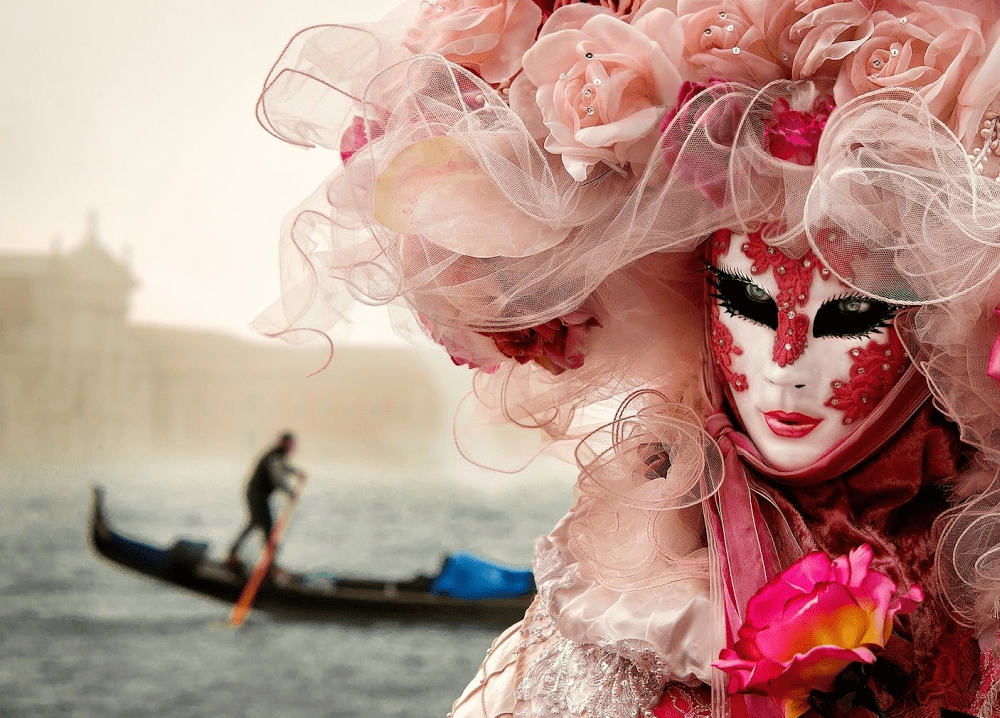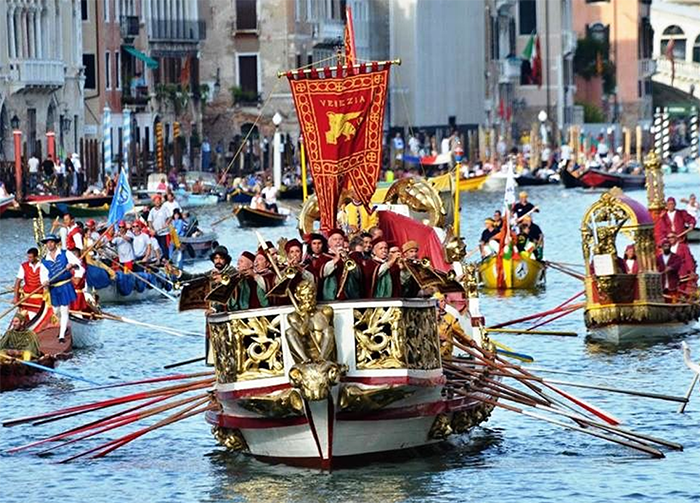Our Top 7 Favourite Venetian Carnival Masks
No matter how many photographs or films you may have seen, it is still a jaw-dropping experience to see Venice’s canals and palaces for the first time (second or even third!). Especially during the Carnevale di Venezia, or The Carnival of Venice!
The tradition states that the Carnival of Venice took it beginnings from the victory of the Venice Republic against the Patriarch of Aquileia in 1162. In honour of this victory, the local people started to dance and gather in San Marco Square.
Unfortunately, there is little known about why mask wearing is such a big part of the Carnival; yet the masks are the quintessential feature that makes the Venice Carnival unique from Italy’s other famous carnivals.
If you are packing for the Carnival of Venice this year, make sure you pick your outfit accordingly. We’ve put together our Venetian Carnival mask’s guide to make your decisions hopefully a little easier.
Each Venetian mask is different from one another, each features bright colours such as gold or silver and they all use complex decorations in the baroque style. Many designs of Venetian masks stem from Commedia dell’arte, or comedy of the profession which was an early form of professional theatre, popular in Europe from the 16th through the 18th century.
The masks can be full-face masks (e.g. the bauta) or eye masks (e.g. the Columbina). Let’s dig into it a little deeper.
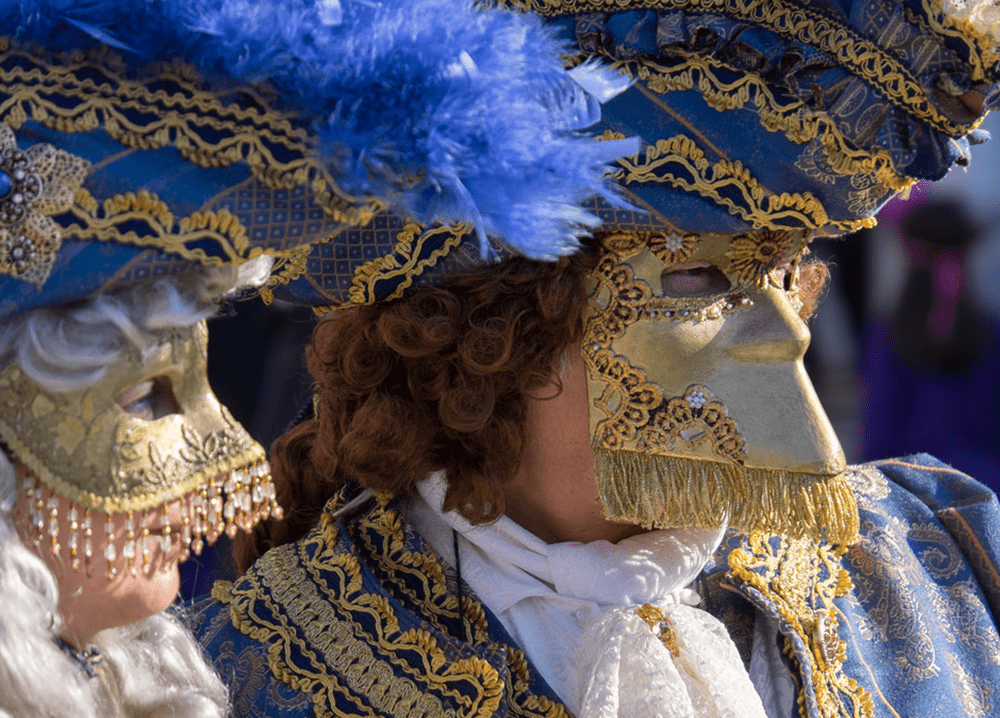
1. Bauta, the Casanova's mask
A Bauta is not just a mask, but rather a whole costume. It’s designed to hide one’s face as well as social status.
It is believed that the word bauta may come from the same root as the German behüten meaning to protect, which is exactly what this costume does: protecting one’s identity! You might recognise it from the Casanova movie directed by Lasse Hallström, where a Bauta is worn by the main characters, belonging to the upper class.
The mask’s beak-like chin is designed to enable the wearer to talk, eat, and drink without having to remove it.
If this is your mask of choice, don’t forget a red or black cape and a tricorn to traditionally go with it.
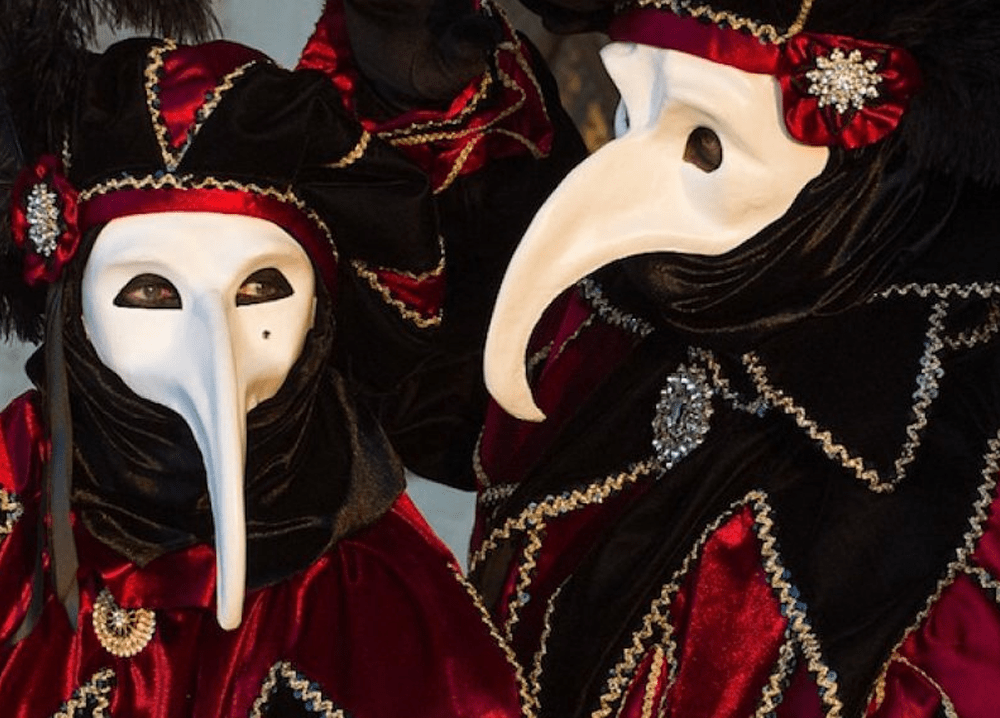
2. The Black Death, or the Plague Doctor mask
This mask may appear a little creepy to some, however it signifies a very important era in the European history – the bubonic plague curse and survival.
The first cases of bubonic plague, or Black Death, were discovered in the 14th century and it was the most devastating pandemic in the history of humanity, affecting the whole of Europe and killing 60% of Europeans at the time.
In the 17th and 18th centuries, plague doctors invented masks to protect themselves from bad air and to prevent contagion. These masks have lenses on the eyes and a long cavity in the nose, which was filled with drugs and aromatic items.
Today these handmade plague doctor masks pay tribute to these brave doctors who helped to stop the greatest pandemic of all time.
Although the mask and costume is worn almost exclusively by men, the enhancement in decoration now suggests that women are adopting this outfit as well. Could this be a great couple’s costume this year?
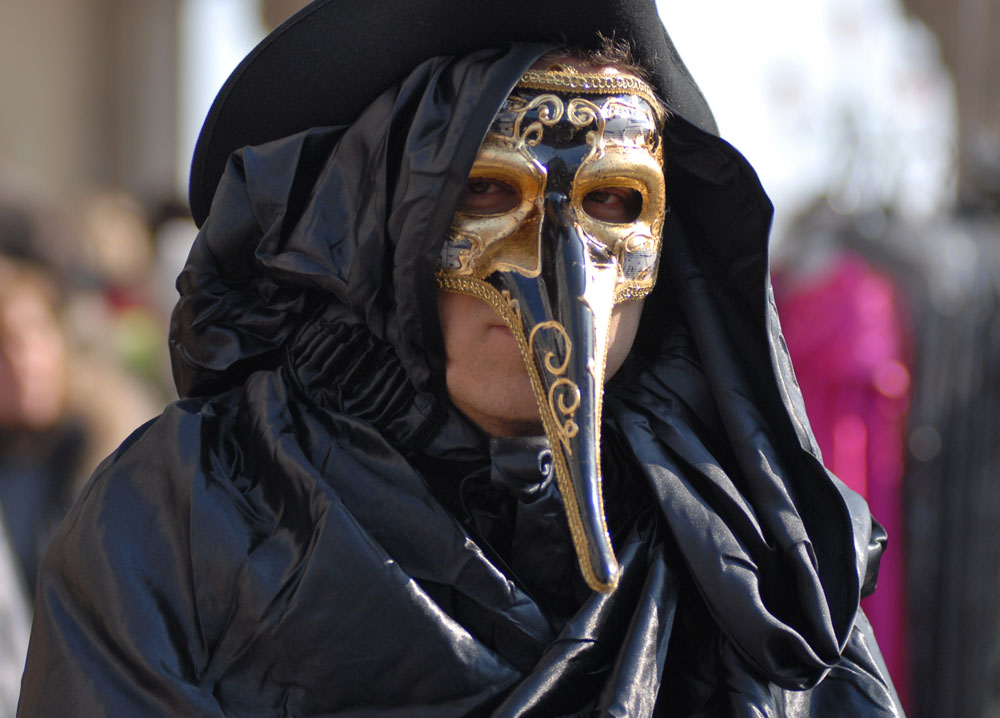
3. The village's Fool Mask
The Carnival of Venice is the time when demons and buffoons meet, and Zanni’s costume is the symbol of deceased people’s souls.
Zanni, a character type of Commedia dell’arte, is best known as an astute servant and trickster who comes from countryside. Throughout time, the Zanni grew to be a popular figure who was first seen in commedia as early as the 14th century.
This somewhat creepy Zanni mask is a half mask in leather with a low forehead, bulging eyebrows and a long nose with a reverse curve towards the end. It is believed that the longer the nose, the more stupid the character.
If this mask gives you chills, don’t worry – you are not alone. We are feeling it too, and it makes sense – the Zanni mask transformed from a ‘horror mask’ into a comic one, just as some well-known horror-movie masks did.
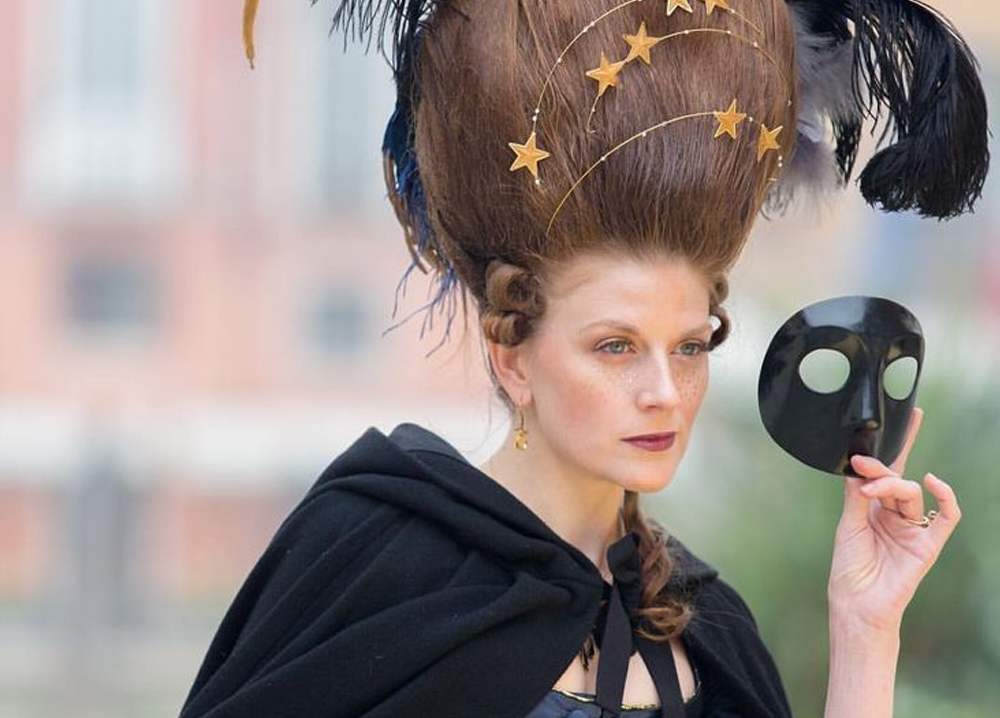
4. Moretta mask, the Dark One
This seemingly simple mask was a small strapless black velvet oval mask with wide eyeholes and no lips or mouth worn by patrician women.
The Moretta was originally only for women to create an aura of mystery and to become more intriguing and thus attractive in the eyes of men.
It is fascinating and quite modern that Moretta was designed in the attempt to making women more captivating by turning them into inscrutable creatures, rather than just showing off their bodies. Venice at the time was a rather immodest and flamboyant city, so it made sense for Moretta to become one of the most popular masks at the Carnival.
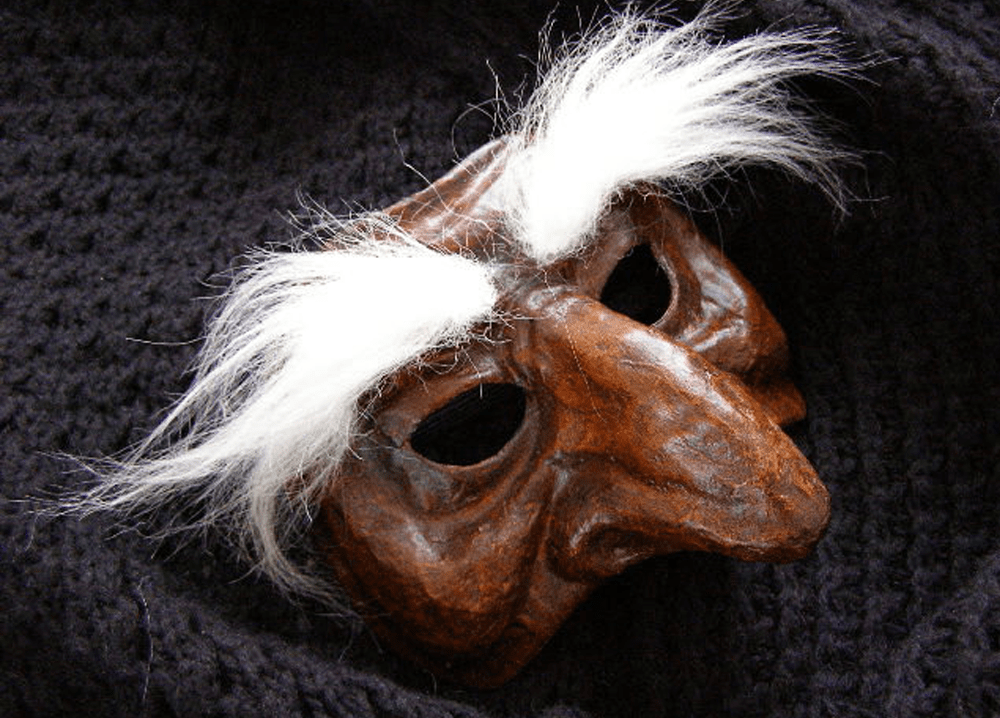
5. The Rich Old Man Pantalone
Pantalone’s roots date back to the Latin comedy, namely to the character of the old man, a typical Venetian Merchant of the 16th century, to be precise.
With his sinister and often inhumane treatment of everyone, really, Pantalone is perceived to be a pivotal part of commedia. His importance is represented in almost every comedic production, often placing him at the beginning.
This mask requires a complete costume that is designed with the inappropriateness intended to comically entertain. The entire costume is usually red and also includes a Greek style hat, a jacket, a pair of long trousers or breeches with stockings, a tight jacket, a woolen skullcap and a robe or cape.
It’s good that the Carnival takes place in European winter – these clothes would be all too much in Australia.
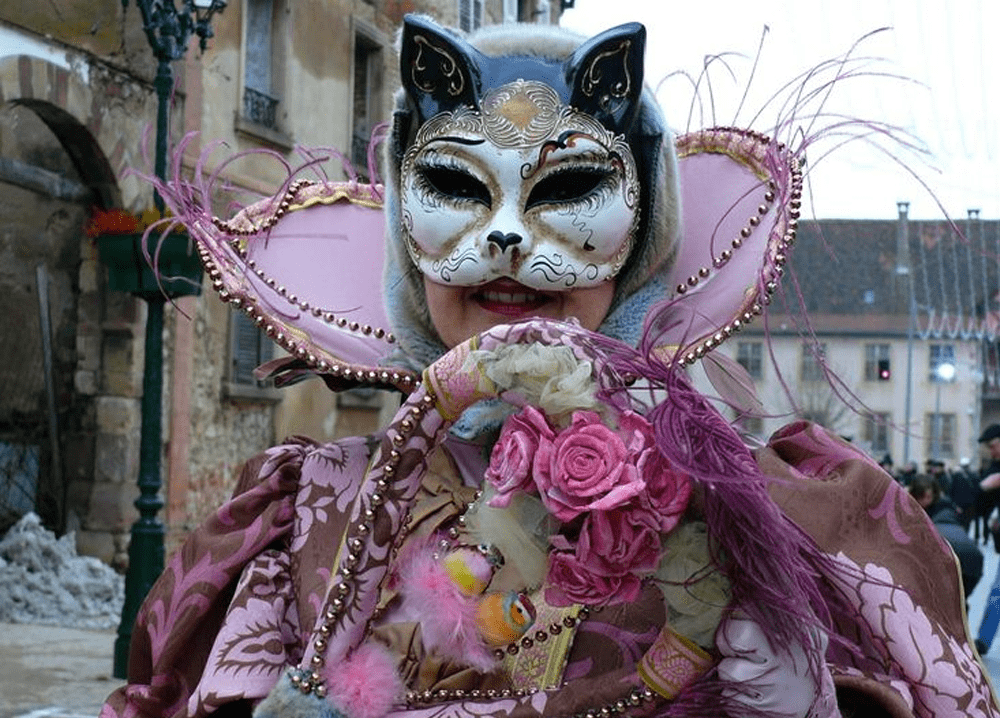
6. Gnaga Cat mask
Interesting fact: the sound ’meow’ is gnau in Venetian, and that’s where this mask it believed to have taken its name from.
Today, both men and women love this gorgeous garment that goes nicely with a royal-like outfit.
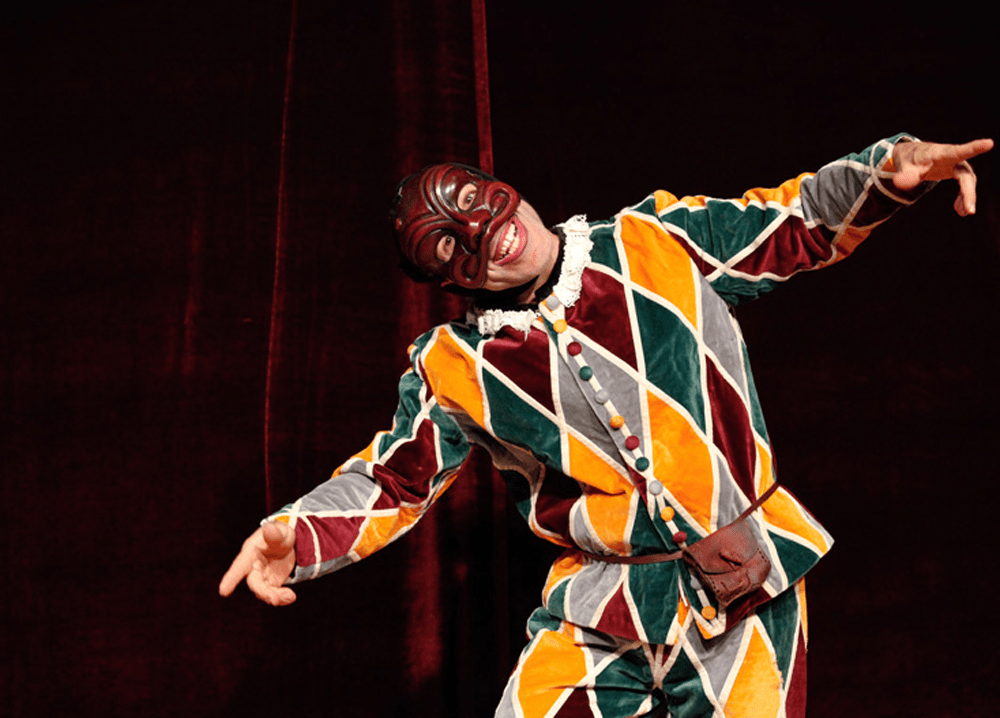
7. Arlecchino: the eternal Pierrot’s rival
This mask is a little bit of a mystery. One hypothesis claims that Michelangelo created it, modelling it on the ancient mask of a satyr. In the traits of his mask some see a fool, some a demon.
The mask is a part of the Harlequin character which is known for his chequered costume. His role is that of a light-hearted, nimble and astute servant, often acting to thwart the plans of his master, and pursuing his own love interest, Columbina, with wit and resourcefulness, and usually competing with the sterner and melancholic Pierrot.
The entire costume is a reflection of the Harlequin’s energetic personality; including his black (or dark brown) mask that resembles the face of a cat.
Who are you going to be this Carnival?

